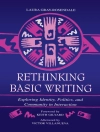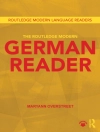Immerse your students in contemporary and classic scholarly research and readings from the major branches of the criminal justice system
This text/reader is a comprehensive, cutting-edge overview of the main research methods used in the fields of criminology and criminal justice. Snapshots of Research offers a wide range of modern research examples, as well as several classic articles, including a broad range of readings from the four major branches of the criminal justice system—policing, courts/law, juvenile justice, and corrections—that are relevant to career paths students may be interested in pursuing.
Table des matières
Preface
Acknowledgments
1. The Scientific Method and the Research Process in Criminology and Criminal Justice
2. Criminological Theory and the Scientific Method
Research Readings:
Reconsidering the Effect of Self-Control and Delinquent Peers: Implications of Measurement for Theoretical Significance – Ryan C. Meldrum, Jacob T. N. Young, and Frank M. Weerman
An Evaluation of the Assumptions That Underlie Institutional Anomie Theory – Mitchell B. Chamlin and John K. Cochran
An Assessment of Scales Measuring Constructs in Tests of Criminological Theory Based on National Youth Survey Data – Todd A. Armstrong, Daniel R. Lee, and Gaylene s. Armstrong
3. Ethics in the Research Process
Research Readings:
The Ethics and Law of Confidentiality in Criminal Justice Research: A Comparison of Canada and the United States – J. Lowman and T. Palys
Combining Ethical Considerations With Recruitment and Follow-Up Strategies for Partner Violence Victimization Rsearch – TK Logan, R. Walker, L. Shannon, and J. Cole
4. Conceptualization and Measurement
Research Readings:
Conceptualization of Terrorism – J. P. Gibbs
Measuring Victimization Inside Prisons: Questioning the Questions – N. Wolff, J. Shi, and R. Bachman
Theoretical and Methodological Issues in Racial Profiling Research – C. Batton and C. Kadleck
5. Sampling Procedures
Research Readings:
Public Support for Getting Tough on Corporate Crime: Racial and Political Divides – J. D. Unnever, M. L. Benson, and F. T. Cullen
Gendered Opportunity? School-Based Adolescent Victimization – P. Wilcox, M. Skubak Tillyer, and B. S. Fisher
Public Awareness and Action Resulting From Sex Offender Community Notification Laws – A. L. Anderson and L. L. Sample
A Snowball′s Chance in Hell: Doing Fieldwork With Active Residential Burglars – R. Wright, S. H. Decker, A.K.S. Redfern, and D. L. Smith
6. Experimental and Quasi-Experimental Research Designs
Research Readings:
Randomized Experiments in Criminal Justice Policy: Prospects and Problems – D. Weisburd
A Quasi-Experimental Evaluation of Thinking for a Change: A ‘Real World’ Application – C. T. Lowenkamp, D. Hubbard, M. D. Makarios, and E. J. Latessa
Applying Evidence-Based Practices to Community Corrections Supervision: An Evaluation of Residential Substance Aubse Treatment for High-Risk Probationers – D. M. Pérez
7. Survey Research and Interviews
Research Readings:
Gang Intervention in Jails: A National Analysis – R. Ruddell, S. H. Decker, and A. Egley, Jr.
Insiders′ Views of Prison Amenities: Beliefs and Perceptions of Correctional Staff Members – R. Tewksbury and E. E. Mustaine
Understanding the Black Box of Gang Organization: Implications for Involvement in Violent Crime, Drug Sales, and Violent Victimization – S. H. Decker, C. M. Katz, and V. J. Webb
Intimacy With Outlaws: The Role of Relational Distance in Recruiting, Paying, and Interviewing Underworld Research Participants – S. Jacques and R. Wright
8. Qualitative Research: Participant Observation, Focus Groups, and Case Studies
Research Readings:
Covert Participant Observation: Reconsidering the Least Used Method – M. Miller
Fear of Gang Crime: A Qualitative Examination of the Four Perspectives – J. Lane
The Philosophical Versus Actual Adoption of Community Policing: A Case Study – A. T. Chappell
9. Unobtrusive Methods: Secondary Analysis, Content Analysis, Crime Mapping, and Meta-Analysis
Research Readings:
Violent Girls or Relabeled Status Offenders? An Alternative Interpretation of the Data – B. C. Feld
Slain and Slandered: A Content Analysis of the Portrayal of Femicide in Crime News – R. Taylor
A Geographic Approach to Racial Profiling: The Microanalysis and Macroanalysis of Racial Disparity in Traffic Stops – S. Roh and M. Robinson
Does an Offender′s Age Have an Effect on Sentence Length? A Meta-Analytic Review – J. Wu and C. Spohn
10. Mixed Methods Research
Research Readings:
Problem-Oriented Policing and Open-Air Drug Markets: Examining the Rockford Pulling Levers Deterrence Strategy – N. Corsaro, R. K. Brunson, and E. F. Mc Garrell
The Impact of Occupational Culture on Drinking Behavior of Young Adults in the U.S. Navy – G. M. Ames, M. R. Duke, R. S. Moore, and C. B. Cunradi
11. Evaluation Research and Policy Analysis
Research Readings:
Combating Methamphetamine Use in the Community: The Efficacy of the Drug Court Model – S. J. Listwan, D. K. Shaffer, and J. J. Hartman
Problem-Oriented Policing, Deterrence, and Youth Violence: An Evaluation of Boston′s Operation Ceasefire – A. A. Braga, D. M. Kennedy, E. J. Waring, and A. Morrison Piehl
References
About the Author
A propos de l’auteur
Richard D. Hartley is an assistant professor in the Department of Criminal Justice at the University of Texas at San Antonio. He holds a Ph.D. from the School of Criminology and Criminal Justice at the University of Nebraska at Omaha. He teaches courses relating to criminal courts and the administration of justice as well as research methods and statistics. Dr. Hartley’s research interests include prosecutorial and judicial discretion, race/ethnicity and crime, and quantitative methods. He has been involved with a number of research projects analyzing sentencing outcomes, especially those for federal narcotics and immigration offenders. Some of his recent and forthcoming publications appear in Aggression and Violent Behavior, Crime and Delinquency, Criminal Justice Review, Journal of Criminal Justice, and Journal of Pediatrics.












